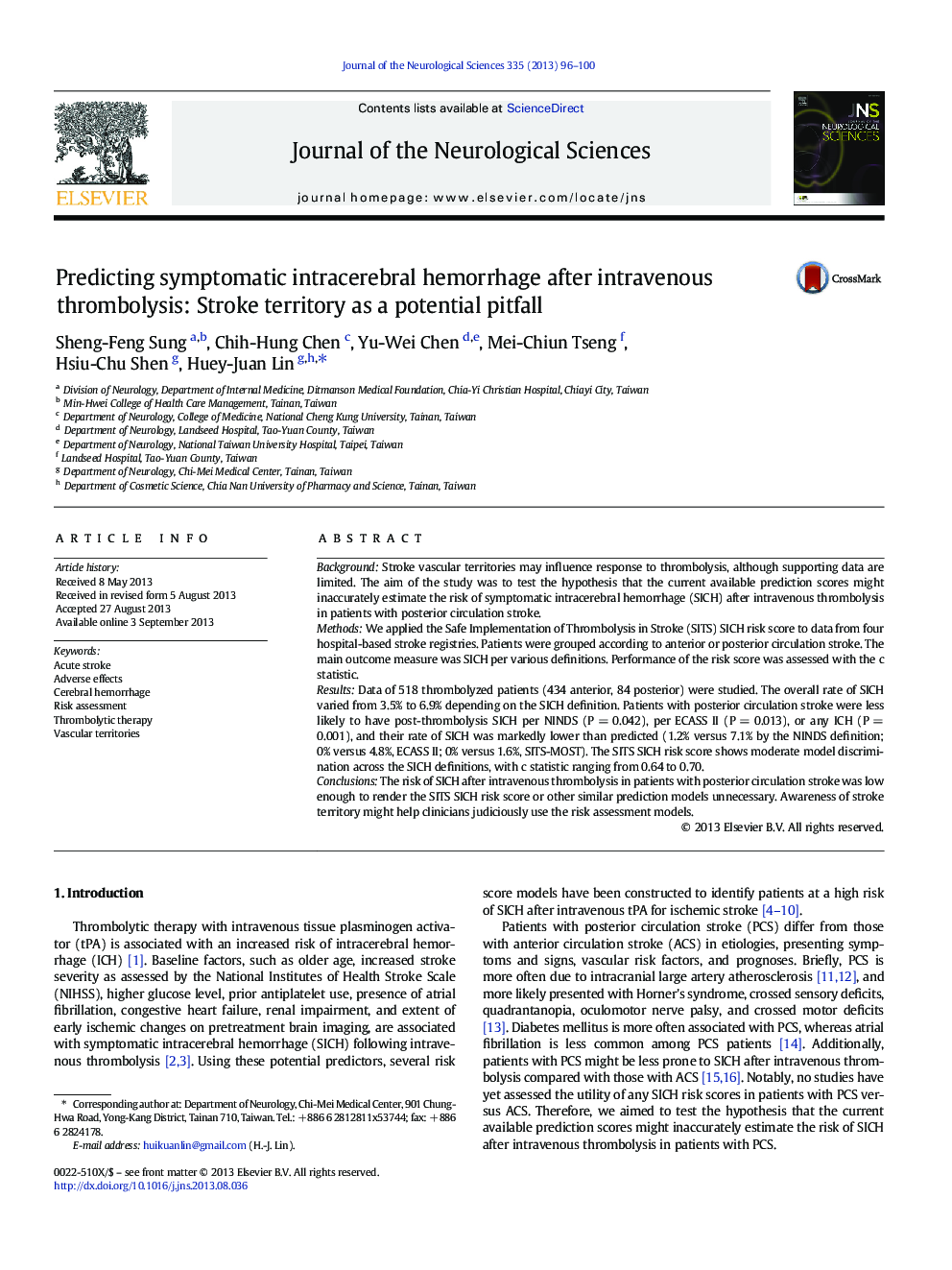| Article ID | Journal | Published Year | Pages | File Type |
|---|---|---|---|---|
| 1913695 | Journal of the Neurological Sciences | 2013 | 5 Pages |
BackgroundStroke vascular territories may influence response to thrombolysis, although supporting data are limited. The aim of the study was to test the hypothesis that the current available prediction scores might inaccurately estimate the risk of symptomatic intracerebral hemorrhage (SICH) after intravenous thrombolysis in patients with posterior circulation stroke.MethodsWe applied the Safe Implementation of Thrombolysis in Stroke (SITS) SICH risk score to data from four hospital-based stroke registries. Patients were grouped according to anterior or posterior circulation stroke. The main outcome measure was SICH per various definitions. Performance of the risk score was assessed with the c statistic.ResultsData of 518 thrombolyzed patients (434 anterior, 84 posterior) were studied. The overall rate of SICH varied from 3.5% to 6.9% depending on the SICH definition. Patients with posterior circulation stroke were less likely to have post-thrombolysis SICH per NINDS (P = 0.042), per ECASS II (P = 0.013), or any ICH (P = 0.001), and their rate of SICH was markedly lower than predicted (1.2% versus 7.1% by the NINDS definition; 0% versus 4.8%, ECASS II; 0% versus 1.6%, SITS-MOST). The SITS SICH risk score shows moderate model discrimination across the SICH definitions, with c statistic ranging from 0.64 to 0.70.ConclusionsThe risk of SICH after intravenous thrombolysis in patients with posterior circulation stroke was low enough to render the SITS SICH risk score or other similar prediction models unnecessary. Awareness of stroke territory might help clinicians judiciously use the risk assessment models.
